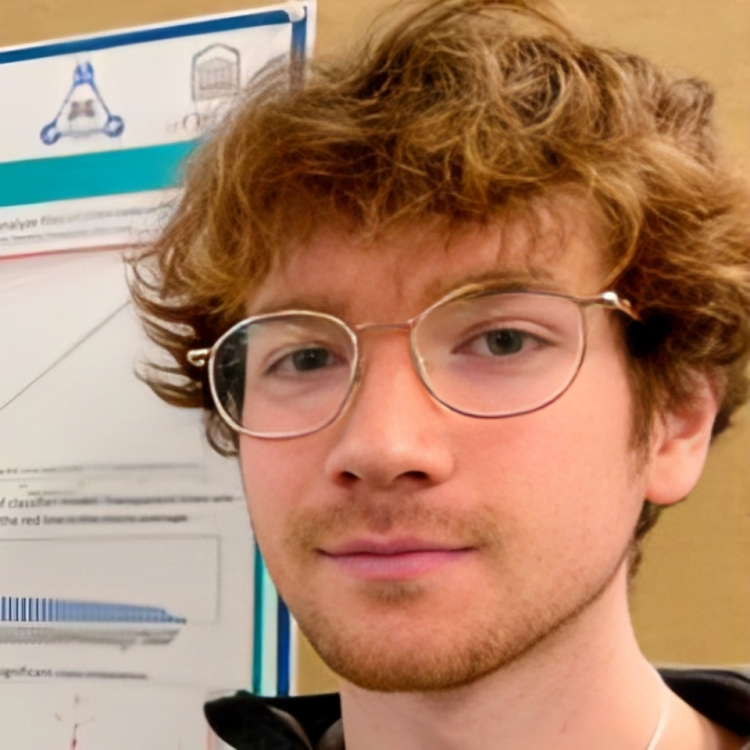It has been fashionable over the past decade to tell every young person to “learn to code.” Universities responded by expanding computer‑science departments, and from 2005 to 2023 the number of U.S. comp‑sci majors quadrupled. Yet in 2025, enthusiasm has cooled. National enrolment growth this year was just 0.2%, and some top programmes expect their graduating cohorts to shrink. At Princeton, the computer‑science chair predicts a 25% smaller graduating class within two years. A Duke survey found that enrolment in introductory comp‑sci courses has dropped 20%. With generative‑AI tools writing code and Big Tech hiring fewer interns, many students—and their parents—are asking whether a traditional software‑engineering degree still makes sense.
This article weighs the pros and cons from the perspective of mid‑2025. I examine the job market, salary trends, tuition costs, dropout rates, alternative paths such as bootcamps, AI’s influence on coding careers and the intangible benefits a degree can confer. My goal is not to push one path but to equip you with data and context to make an informed choice.
The job market: short‑term pain, long‑term optimism
Recent headlines have been discouraging. A SignalFire report quoted by The San Francisco Standard found that hiring of new graduates by the 15 largest tech companies has fallen by more than 50% since 2019. Before the pandemic, new grads comprised roughly 15% of Big‑Tech hires; now they account for 7%. Companies squeezed by high interest rates and cautious investors are prioritising experienced engineers over juniors. The same article quotes a Berkeley professor who says that, at start‑ups, “the only type of employee anybody’s interested in hiring is a relatively heavyweight senior person”. When supply outruns demand, entry‑level wages stagnate; Lemon.io’s payroll analysis shows developers’ base pay rose 24 % between 2018 and 2024, while overall U.S. wages grew 30%.
Despite these headwinds, long‑term data tell a different story. The U.S. Bureau of Labor Statistics (BLS) lists software developers among the fastest‑growing occupations, projecting 17% employment growth from 2023 to 2033 and 327,900 new jobs. Median pay is high—about $133,000 in 2024—and the unemployment rate remains low (2.4% according to U.S. News). Global IT spending is also expected to rise; Deloitte predicts 9.3% growth in 2025, with the software market reaching $743 billion. Tech hiring has always been cyclical: downturns scare students away, leading to shortages and salary spikes later. MIT professor Sam Madden argues that generative AI will ultimately create more engineering jobs because companies need people who understand algorithms and can integrate AI responsibly.
Tuition and opportunity cost
What you’ll pay
In Canada, average undergraduate tuition for domestic students in 2024/25 is $7,360, while international students pay $40,114. In British Columbia—the author’s home province—domestic undergrads pay about $6,607 and international students $37,184. A full‑time computer‑science student at the University of British Columbia pays roughly $6,079 per year; an international student pays $51,040.
U.S. costs are steeper. EducationData.org estimates that attending an in‑state public university costs about $27,146 per year, including living expenses. Private nonprofit universities average $58,628. CollegeTuitionCompare reports average computer‑science tuition of $33,606; in‑state students pay around $10,154. Factor in four years of lost earnings and potential interest on loans, and the total can exceed $229,000.
The cost of quitting
Not everyone who starts finishes. MissionGraduateNM calculates that 32.9% of college students drop out each year and that the first‑year dropout rate is 19%. Computer science has the highest attrition: 10.7% of CS majors quit. Financial pressures are the main reason—30% of dropouts cite money issues—but Wawiwa Tech notes that many students overestimate the glamour and underestimate the math. They lose motivation when they encounter proofs, algorithm analysis and long debugging sessions. Others struggle because they lack quantitative skills or are afraid to ask for help. Nearly 38% of all college dropouts report financial hardship, and among those who do finish, some are disappointed when entry‑level jobs are scarce.
Mental health is another hidden cost. A 2025 BairesDev survey found that 87% of remote developers report better mental health and 90% more productivity. In contrast, many full‑time students juggle part‑time work, all‑night coding sessions and imposter syndrome. Moodle’s Burnout Report 2025 indicates that 66% of American employees feel burned out; students aren’t immune.
Note: The first ~5 minutes of this video focus heavily on the challenges and risks ahead (a bit of “doom and gloom”), but stick with it—after that, the conversation shifts to an optimistic view of how AI and computer science can grow and thrive together in the future.
Alternatives to the four‑year degree
Bootcamps and vocational programmes
Coding bootcamps promise marketable skills in months instead of years. According to Nucamp, 2024 bootcamps have a 92% job‑placement rate with average starting salaries of $72,500. Their 2025 update says 89% of graduates are employed within six months and earn $70k–$130k. Bootcamps tend to cost between a few hundred and a few thousand dollars; some Nucamp courses start at $458. Many include career coaching, résumé workshops and employer partnerships.
However, they’re not panaceas. Quality varies widely; there is no universal accreditation. Bootcamps prioritise practical projects—often web or app development—while glossing over theory. Graduates may land junior roles but might hit a ceiling when aiming for research, systems‑level development or leadership positions that require algorithmic depth. Job guarantees often have caveats, applying only if students meet strict application quotas and reside in certain regions. Ultimately, success still hinges on self‑directed study and continuous portfolio building.
Self‑directed learning and apprenticeships
You can learn to code through free MOOCs, textbooks and open‑source contributions. This route costs little, but it demands enormous self‑discipline. Many self‑learners quit because they lack structure or mentorship; Wawiwa observes that people often drop out of online courses because no trainer is there to hold them accountable. Apprenticeships and on‑the‑job training programmes can provide a middle ground—earning while learning—though availability varies by region.
How AI and automation change the calculation
Generative‑AI tools such as GitHub Copilot, ChatGPT and Anthropic’s Claude have upended how code is written. The Atlantic notes that executives at Alphabet and Microsoft say AI now writes or assists with 25% of their code and could replace half of all entry‑level workers in the next five years. Anthropic’s chief product officer admits that senior engineers sometimes delegate tasks to chatbots instead of junior staff. A recent Pew study (cited in the same article) found that Americans believe software engineers are among the professions most likely to be affected by generative AI. These sentiments help explain why enrolment is stalling.
Yet the relationship between AI and coding careers isn’t zero‑sum. Codesmith’s 2025 analysis argues that AI will augment rather than eliminate developers, echoing views from Bill Gates and AI pioneer Andrew Ng. The World Economic Forum’s Future of Jobs Report 2025 lists software developers, Big‑Data specialists and AI specialists among the fastest‑growing roles, and Worldmetrics predicts that AI will actually create 540,000 software‑engineering jobs in 2025. In essence, AI will automate rote tasks, but those who understand algorithms and systems will be in high demand to architect, debug and govern these tools. The risk is highest for juniors performing repetitive work; the opportunity is greatest for engineers who can harness AI to increase productivity.

The intangible benefits of a degree
Beyond employment statistics, a software‑engineering degree offers advantages that a short course cannot replicate:
- Strong theoretical foundation: University curricula teach algorithms, data structures, operating systems, discrete mathematics and software engineering principles. These topics build transferable problem‑solving skills. When frameworks or languages change—as they inevitably do—graduates can adapt more easily.
- Access to research and advanced roles: Many research positions, graduate programmes and government jobs require an accredited degree. If you aspire to design AI models, build compilers or work on aerospace systems, you’ll likely need formal qualifications.
- Networking and mentorship: Four years spent with peers and professors can yield lasting relationships. Professors may recommend internships or research projects, and classmates often become coworkers or co‑founders. Bootcamps offer networking too, but the community is smaller and time‑bound.
- Credential signal: A degree still carries weight with many employers and immigration systems. Some companies filter applicants based on accreditation; certain countries use education level in their points‑based visa systems. Even if the industry gradually shifts to skills‑based hiring, a degree won’t hurt.
- Soft‑skill development: University projects require teamwork, technical writing and presentations. David Deming, a Harvard economist, points out that liberal‑arts majors sometimes out‑earn engineers because they cultivate soft skills that employers consistently value. A CS degree can deliver both technical depth and communication skills.
These benefits come at a cost of time and money, but they may position graduates to weather market cycles and pivot into new roles created by AI.
Putting it all together
To decide whether a software‑engineering degree is worth pursuing, weigh your personal goals, resources and tolerance for risk:
Practical advice
- Explore hybrid paths. Many universities offer co‑op programmes or internships that provide income and experience. These placements make you more attractive to employers and offset tuition costs. Alternating work and study also helps gauge whether you actually enjoy software development.
- Focus on projects and community. Whatever path you choose, build real applications, contribute to open‑source, attend hackathons and engage with local developer communities. Employers increasingly care about portfolios and problem‑solving demonstrations.
- Stay current. Whether you study formally or not, technology moves quickly. Embrace continuous learning—be it through electives, online courses or reading research papers. Generative‑AI tools can help you learn faster, but you need foundational knowledge to wield them responsibly.
- Consider mental well‑being. Burnout is rampant. Choose study environments that support your health. Remote or part‑time programmes may reduce stress, but they require discipline; on‑campus programmes offer community but can be intense. Seek support groups, counselling and balanced workloads.
Conclusion
For many, a software‑engineering degree is still a worthwhile investment. Long‑term demand for developers remains strong, and a degree offers theoretical depth, networking opportunities and credentials that bootcamps cannot always match. Yet the path is no longer a guaranteed ticket to a six‑figure job. Entry‑level hiring has contracted, tuition costs are high, and AI is automating routine coding. Bootcamps and self‑directed learning provide cheaper, quicker ways into the industry but require discipline and may limit future options.
Ultimately, decide based on your aspirations, financial situation and preferred learning style. Combining formal education with self‑learning, internships and ongoing skill development may provide the best balance. In a world where AI writes boilerplate and new languages emerge constantly, the most valuable asset isn’t a particular credential but the ability to learn continuously, adapt and think critically.








































































